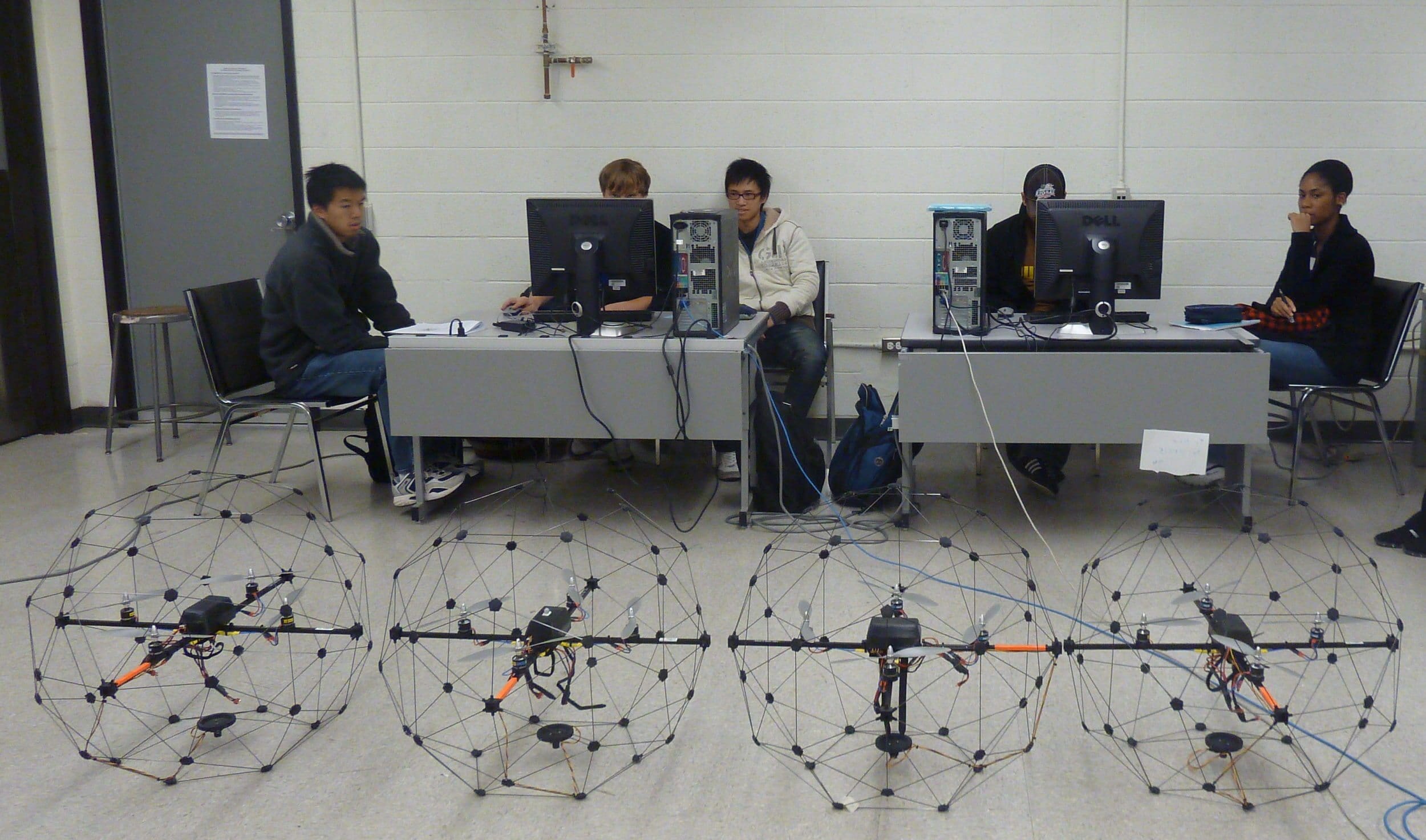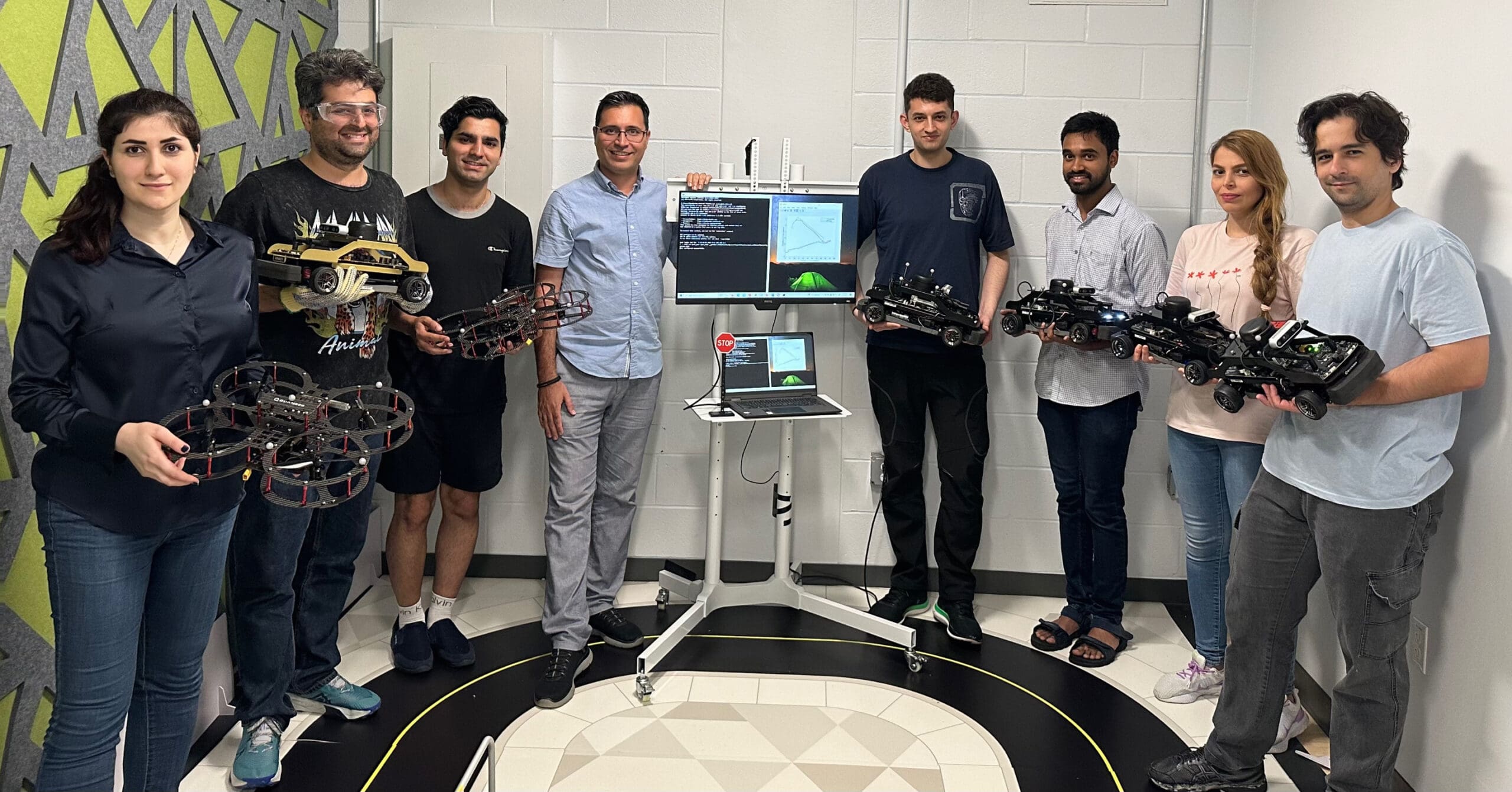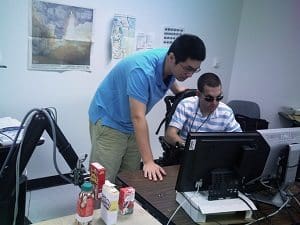
As an Associate Professor in the Department of Mechanical and Industrial Engineering at Concordia University, Dr. Youmin Zhang puts in very full days and weeks, both as a teacher and a lead researcher. His specific areas of interest are avionics, guidance, navigation and flight control of unmanned aerial vehicles (UAVs). Passionate about preparing students to become industry-ready engineers, he enthusiastically brings his latest research into the classroom.
In addition to other courses, Dr. Zhang currently teaches two courses relevant to his research work: Flight Control Systems to undergraduates, and Fault Diagnosis and Fault Tolerant Control Systems at the graduate level.
Challenge
Finding cost-effective, practical tools for hands-on UAV control teaching and research
Dr. Zhang had one overriding need: to engage and motivate his flight control course students through hands-on learning instead of strictly theoretical knowledge. He was looking for a way to demonstrate concepts, and, for practical purposes, do it all in an indoor environment in a way that was both time-efficient and physically safe for all concerned.
“In the past, we had demonstrated the theory of flight control systems in class mainly through simulations and the flight simulator,” Dr. Zhang said. “We showed many videos, but the learning was dry. What was worse, the students lacked first-hand experience with implementing and testing their flight control laws in a real, flyable test-bed.“
A practical system would also help Dr. Zhang in his research. With the ever-present funding challenges, practical, hands-on learning would give Dr. Zhang even stronger argument for acquiring the devices he needed.
Solution
Quanser's cutting-edge unmanned aerial vehicle technology
Dr. Zhang already had an ongoing relationship with Quanser through a Strategic Project Grant (SPG) supported by the Natural Sciences and Engineering Research Council of Canada (NSERC), for which Quanser is one of industrial supporting organizations. With Quanser’s responsive team of engineers, he was able to make significant progress in addressing his ongoing challenges.
“I visited Quanser two years ago and learned about the systems they were developing for my field. I could see that I did not have to waste time and resources building my own teaching and research tools” he said.
Of special relevance to Dr. Zhang was Quanser’s Qball-X4, a 1.4-kilogram quadrotor helicopter protected by a carbon fibre cage and designed for indoor use. He saw its research capabilities, but also its great value in the classroom as a hands-on learning tool in his flight control courses.
“The purpose of my undergraduate Flight Control Systems course is to teach students the concept of flight and flight dynamics, as well as how to design an autopilot,” said Dr. Zhang. The Qball would be perfectly suited for teaching, especially in an enclosed space like the lab. In fact, it would be most likely the first time any quadrotor unmanned aerial vehicle (UAV) was used in the classroom.
“Prior to having Quanser’s Qballs, we spent a lot of time in this course dealing with unmanned fixed wing aircraft,” described Dr. Zhang. “But testing our work out on real fixed wings models wasn’t practical indoors and often wasn’t feasible outdoors because of weather challenges or insufficient open space. The Qball type of helicopter is perfect because it can get a full workout in our indoor, and relatively small, lab environment. The Qball’s safety cage makes all the difference: the helicopter, the lab and the students are all protected and safe.”
What’s more, there was the ability of Quanser’s QUARC control design software to work seamlessly with the Matlab/Simulink- based flight control software that students were already using. As Dr. Zhang put it, “Being able to work with tools students are familiar with, like Matlab/Simulink, is much more convenient and efficient for developing, implementing and testing different controls, and not only controls, but navigation and guidance too.”
“The people at Quanser were a great support to me technically, but they also had extensive knowledge of funding sources and processes, and experience as advisors on the preparation of funding requests,” continued Dr. Zhang. He proposed to his department buying the Qball helicopter from Quanser, but financing was an issue. “With Quanser’s support, I was able to make a strong case for the Qball’s value as both a teaching and research tool that would allow me to bring our latest research outcomes through the NSERC SPG project into course teaching.”
Dr. Zhang excited the department and faculty, showing them that instead of relying on just text book theory and videos, students would be able to actually test out their work by flying an actual helicopter. “In the end, the faculty recommended that we share the Qballs with another department at the university and approved the funding,” said Dr. Zhang.
Result
When students can't wait to get to class
Last year Concordia University acquired five Qballs and the 35 students who used them, put them to work developing automatic flight control functions for UAVs, and testing them in the safe, controlled indoor environment of a special teaching lab.
The use of the Qball by course labs and in course projects started to attract students, help them to make a direct link between the theory learned in the course with the practical engineering practice. It also encouraged and motivated students to continue on their engineering path in the future study and work.
Talk about motivating your students. “They thought this was so cool”, said Dr. Zhang, “they couldn’t wait to get to my class! They were even taking out their phones and capturing it on video to show their friends.”
The Qballs and the entire system were well suited to the needs of the Concordia students. “The undergraduate students doing this for the first time weren’t asked to implement their own controllers; they were using pre-designed controllers,” pointed out Dr. Zhang. “It’s certainly possible they could in the future modify their controllers in some way. The graduate students, with more experience in this area, can do more. We can increase the complexity of the task, if the students have the background to handle it.”
By using Qballs for teaching as well as research, and by sharing it with other departments that teach real-time systems, Dr. Zhang and his associates were able to make a great case for being funded. The university saw it was a wise allocation of funds.
Other universities have taken notice of what Dr. Zhang has accomplished with the Qballs. After visiting his lab and learning about his research and teaching at the conferences, Laval and McGill in Quebec, as well as Nancy University in France and Polytechnic University of Catalonia in Spain, have either decided or are considering purchasing Qball technology for their research and teaching.
“We’ll accomplish even more next year because we’ll have five Qballs and a safety net and a permanent lab,”Dr. Zhang added enthusiastically. “All our flight control students will get plenty of hands-on experience in a relatively short amount of time.”
Clearly, working with Quanser has helped Dr. Zhang elevate his effectiveness as both a researcher and a teacher. It has also encouraged his flight control students to excel in their field.


